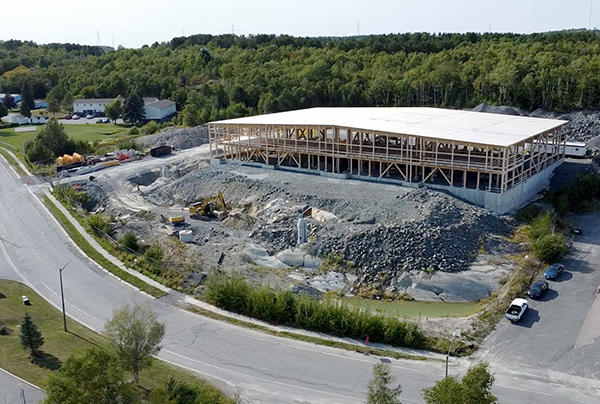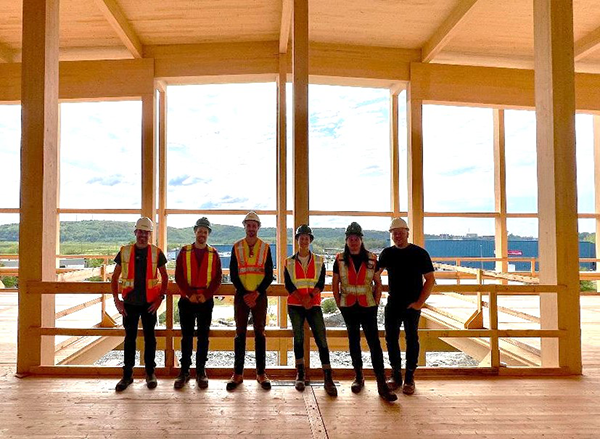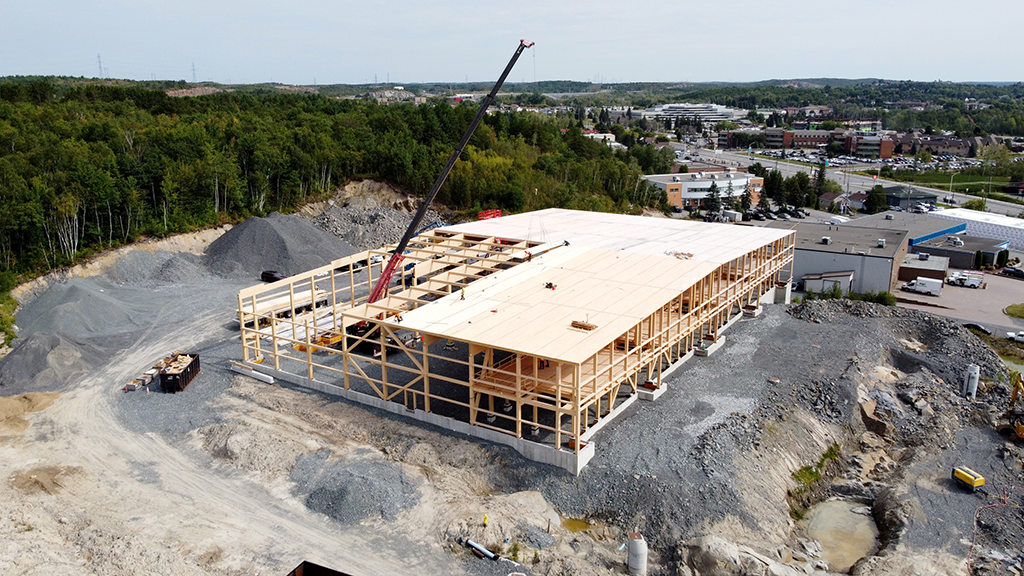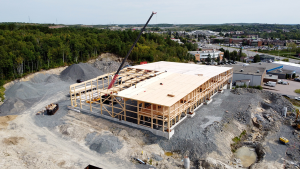Structural steel has long been the material of choice for industrial buildings in Sudbury, Ont., but Bloomington Developments has stepped out of that comfort zone to build two industrial buildings in mass timber.
The larger project is a 48,000-square-foot two-storey industrial/commercial building comprised of cross-laminated timber (CLT) that will be completed by the end of the year.
“It is definitely new to see mass timber in the industrial sector here and I don’t think it is common anywhere across Canada,” says project architect Patrick Danielson, principal at Danielson Architecture Office, Inc. of Sudbury.
While the building will be clad in a Canadian-sourced insulated steel panel system, the interior will largely consist of exposed CLT.
Danielson, who has experience with mass timber at a project at the Vancouver International Airport, says initially the Sudbury warehouse on Cambrian Heights Drive and a smaller CLT building in Herold Industrial Park were specified in steel but the pandemic struck causing steel prices to soar and supply to dwindle.

“That prompted our search for alternatives,” Danielson says, noting “a cold call” to Montreal-based Nordic Structures led to collaboration with the architectural firm. Nordic has supplied the CLT and engineering services.
“I think for Nordic it was a good opportunity because they could penetrate a market that they hadn’t really done much work in,” Danielson says, adding the transition from a steel design to a CLT one was smooth.
He says along with the price of CLT being less than steel, the mass timber also bested steel for its sustainable benefits and its esthetics.
Tergos Architecture + Construction of Quebec is the erections contractor for the project.

Bloomington Developments will operate both CLT buildings upon completion, says Darian Sweeney, project manager of Bloomington.
He says while the Cambrian Heights Drive building won’t be completed until late 2025, interest from prospective tenants has been significant and some callers have requested leasing the entire building.
The smaller CLT building at Herold Industrial Park is set to open in June. Its major tenant has signed a 10-year lease with Bloomington.
Sweeney says the long-term lease inspires confidence in the mass timber product as industrial leases typically range between three and five years on steel buildings in Sudbury.
Sweeney adds Bloomington got a “market-leading rate” for the lease which he attributes largely to the appeal of mass timber.
“We have had a lot of interest from bigger corporations, especially as they move to more sustainability and look for ways to reduce their carbon footprint,” he states.
Danielson adds the uncertainty of material availability caused by the tariffs is reminiscent of tough times in the industry during the pandemic. He suggests it could turn more developers off steel and on to mass timber acquired through Canadian manufacturers such as Nordic.
Noting his design firm’s industrial work is increasingly shifting from steel to wood, Danielson expects existing wood manufacturers will grow and new ones will pop up because the “pressures are there to support” the blossoming mass timber industry in Canada.
Sweeney adds Bloomington is planning another industrial project that includes updates to an existing structure and a new mass timber warehouse.
That project is expected to get underway in the fall.
A solid business case can be made for the development of mass timber manufacturing plants in northern Ontario, he says, but that industry could use government incentives to spur growth.
says Bloomington recently had an inquiry from a Belgium-based mass timber supplier looking to establish a Canadian presence.
“Who knows, we could end up with someone with the desire and capital approaching us to open a mass timber production facility in one of our buildings,” he says.









Recent Comments